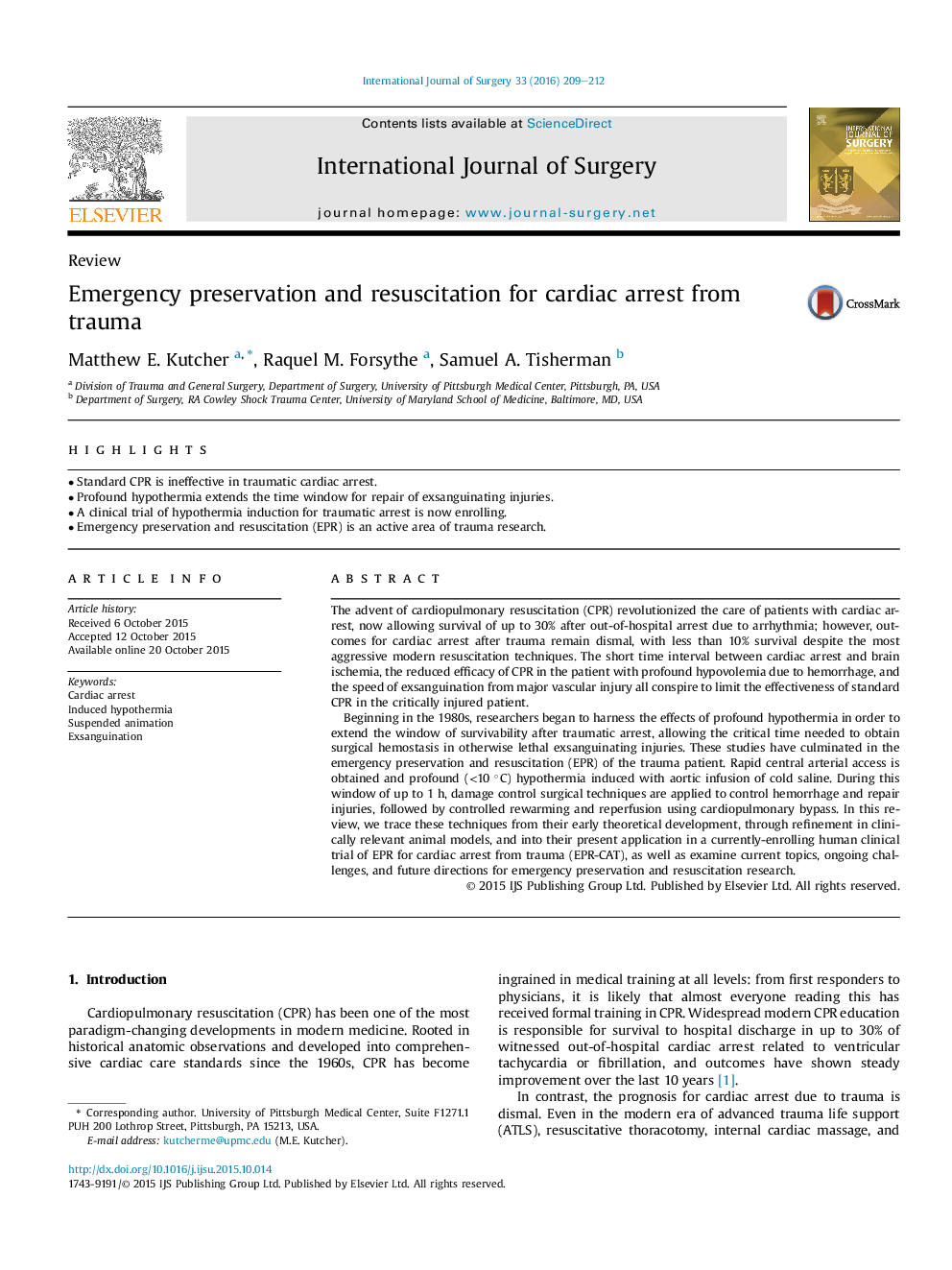| کد مقاله | کد نشریه | سال انتشار | مقاله انگلیسی | نسخه تمام متن |
|---|---|---|---|---|
| 4285243 | 1611952 | 2016 | 4 صفحه PDF | دانلود رایگان |
• Standard CPR is ineffective in traumatic cardiac arrest.
• Profound hypothermia extends the time window for repair of exsanguinating injuries.
• A clinical trial of hypothermia induction for traumatic arrest is now enrolling.
• Emergency preservation and resuscitation (EPR) is an active area of trauma research.
The advent of cardiopulmonary resuscitation (CPR) revolutionized the care of patients with cardiac arrest, now allowing survival of up to 30% after out-of-hospital arrest due to arrhythmia; however, outcomes for cardiac arrest after trauma remain dismal, with less than 10% survival despite the most aggressive modern resuscitation techniques. The short time interval between cardiac arrest and brain ischemia, the reduced efficacy of CPR in the patient with profound hypovolemia due to hemorrhage, and the speed of exsanguination from major vascular injury all conspire to limit the effectiveness of standard CPR in the critically injured patient.Beginning in the 1980s, researchers began to harness the effects of profound hypothermia in order to extend the window of survivability after traumatic arrest, allowing the critical time needed to obtain surgical hemostasis in otherwise lethal exsanguinating injuries. These studies have culminated in the emergency preservation and resuscitation (EPR) of the trauma patient. Rapid central arterial access is obtained and profound (<10 °C) hypothermia induced with aortic infusion of cold saline. During this window of up to 1 h, damage control surgical techniques are applied to control hemorrhage and repair injuries, followed by controlled rewarming and reperfusion using cardiopulmonary bypass. In this review, we trace these techniques from their early theoretical development, through refinement in clinically relevant animal models, and into their present application in a currently-enrolling human clinical trial of EPR for cardiac arrest from trauma (EPR-CAT), as well as examine current topics, ongoing challenges, and future directions for emergency preservation and resuscitation research.
Journal: International Journal of Surgery - Volume 33, Part B, September 2016, Pages 209–212
